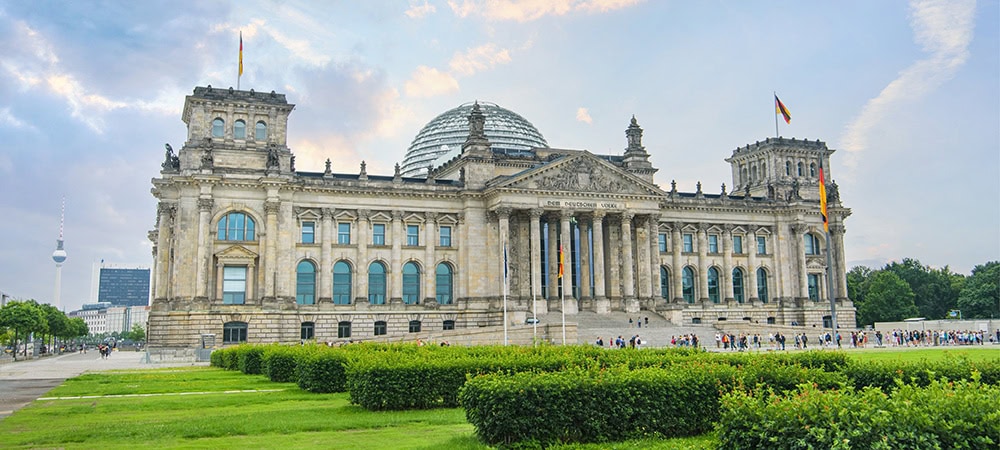Low trust in corporate sustainability promises

Something is sustainable when new things are created from it, when resources are conserved and the energy cycle remains positive. It is known from physics that the sum of energy is a constant, but here we are talking about the sustainable use of resources so that no energy is "wasted" in one's own actions. Increasing environmental awareness and concern about waste and depleted resources are leading more and more consumers to focus on more sustainable consumption. This is according to the Capgemini Research Institute study "Circular Economy for a Sustainable Future: How Organizations Can Empower Consumers and Transition to a Circular Economy."
For this, consumers are increasingly turning to companies that rely on the principle of the circular economy. However, almost half believe that companies are currently not doing enough to recycle, reuse and reduce waste.
SAP Responsible Design
SAP has announced the availability of the Responsible Design and Production solution, which is designed to enable sustainable product design and the transition to a circular economy. This is the latest offering in a growing portfolio of sustainability-specific software applications that provide companies with greater measurability and more comprehensive data management.
As sustainable business regulations are introduced, for example, setting levies on non-recycled plastic packaging, SAP's Responsible Design and Production solution is designed to enable companies to move more quickly to circular economy best practices. The new solution can provide companies with a better overview of the material flows in their processes and help them comply with rapidly changing regulations, especially on product packaging and plastics.
follow and comply with.
As companies increasingly develop sustainable products, controlling materials and managing regulatory data is becoming one of the most complex challenges in today's consumer products industry.
"The circular economy is based on three principles that are influenced by design: Avoid waste and pollution, reuse products and materials over and over again, and regenerate natural systems. Digital solutions play an important role on the way to the circular economy" said Andrew Morlet, CEO of the Ellen MacArthur Foundation. "As a result, companies can incorporate circular economy practices into all their operations - from product design that takes waste prevention into account from the outset to tracking the life cycle of the materials used."
For the study mentioned above, the Capgemini Research Institute surveyed more than 8,000 consumers in 14 countries. It shows that consumers want to consume more sustainably, for example by reducing their overall consumption (54 percent), buying more durable products (72 percent) or having products repaired and maintained to extend their lifespan (70 percent). 67 percent expect companies to advertise their products responsibly and not promote overconsumption.
Previous research by Capgemini shows that companies have so far failed to establish the circular economy model, which closes material loops wherever possible. At the same time, more and more consumers are turning to those companies that have developed such a sustainable business model. This is particularly true in areas where consumers have already developed a high level of awareness, such as food and plastic waste. For example, 44 percent of consumers have increased their spending in the past 12 months with food and beverage companies that focus on recycling, reuse and waste reduction. 40 percent of consumers have done so in personal and household care products.
Sustainable core processes
With the SAP solution, companies can integrate circular economy principles into their core processes to avoid waste and add value by designing products that are sustainable from the start. For example, a shampoo brand manager gets an overview of the entire product lifecycle, including extended producer responsibility (EPR) obligations and levies on plastic packaging in different markets. He is thus able to modify the design to reduce waste and make appropriate decisions to reduce the costs of the downstream waste system.
"Every year, we consume almost twice as many resources as our planet can provide again. Companies can make a decisive contribution here to longer resource use in our systems by focusing on intelligent, responsible product design that reuses resources rather than disposing of them" said Scott Russell, member of the SAP Executive Board and head of Customer Success. "Designing products that eliminate waste and use environmentally responsible materials is fundamentally very complicated. But SAP Responsible Design and Production reduces this complexity and serves as a benchmark for our customers to provide products that are recycled back into the production cycle and ultimately achieve a regenerative economy."
"The circular economy is the key to sustainable growth. Consumers are already doing their part with their behavior, but they can
only choose from a small existing range. It is therefore up to industrial companies to develop products with a more sustainable life cycle", comments Simon El Dib, Head of Capgemini Invent Austria, on the study. "To do this, they need to initiate a profound change in three areas: minimizing the CO2 impact of their existing products and services, product design that takes the principle of the circular economy into account from the outset, and establishing a sustainable business strategy for the entire operation. On the road to greater sustainability, the circular economy is an investment in the way we want to do business in the future."
In contrast to the linear "take - make - waste" economic model, the circular economy is regenerative and aims to gradually decouple growth from the consumption of finite resources. For consumers, this means buying durable products that are recyclable or made from recycled materials, keeping them in use for a long time through effective maintenance and repair, or disposing of them at the end of their life in a way that produces little or no waste.
Center for Digital Green-Tech
SAP Responsible Design and Production is a native cloud solution developed with Accenture on the SAP Business Technology Platform. It provides tailored information to help companies stay up to date on EPR regulations and levies on plastic packaging, integrate circular economy principles into core processes, and optimize design for sustainable business.
The new Center for Digital Green-Tech of the August Wilhelm Scheer Institute at the Clausthal University of Technology (TU) site is also working on the challenges of a digital circular economy. Climate change, the shortage of raw materials and the decline in biodiversity are clear arguments for the need for a circular economy. Digital innovations in particular can significantly promote sustainability in this context. The Lower Saxony Ministry of Science and Culture is supporting the project with a funding volume of two million euros. Representatives from science, politics and business were on hand for the festivities in the domed hall of the Aula Academica under corona conditions.
"There is no doubt that one of the major challenges facing society is to make our economy sustainable. This includes, among other things, the economical use of finite resources and their intelligent reuse. We are currently experiencing the economic impact that a shortage of raw materials can have. Therefore, it is in the interest of our country, together with the August Wilhelm Scheer Institute and building on the research strengths of the Clausthal University of Technology, to set innovation impulses that benefit our economy and society.", says Björn Thümler, Minister of Science of the State of Lower Saxony.
An important approach in this context is the circular economy. "We need a fundamental paradigm shift: from raw material end to raw material turnaround. Only in this way can the foundations for a sustainable society be laid on ecological, economic and social successes. This will be made possible by a comprehensive digital transformation", says Professor August-Wilhelm Scheer, founder and CEO of the August-Wilhelm-Scheer-Institut.
Clausthal University of Technology has set itself the goal of standing for interdisciplinary research and teaching as well as interdisciplinary transfer in the field of the Circular Economy worldwide in 2025. Prof. Dr. Joachim Schachtner, President of Clausthal University of Technology, underlines the dimension of the guiding theme: "In the scientific profile of our university, the Circular Economy includes not only the classic circular economy, but also renewable energies and - very importantly - the digital control of the entire system."





